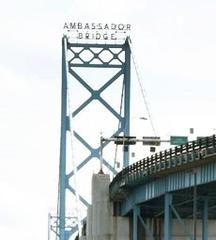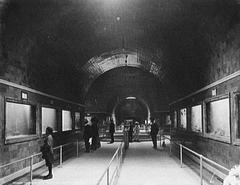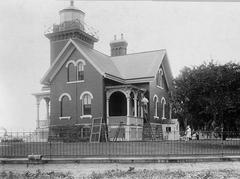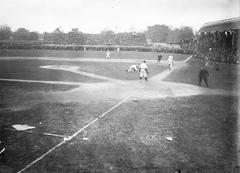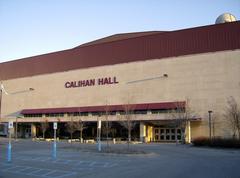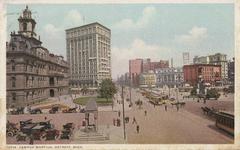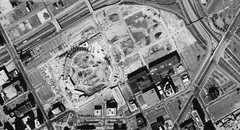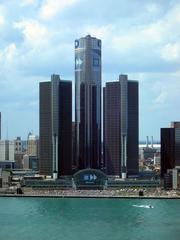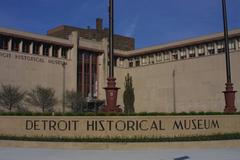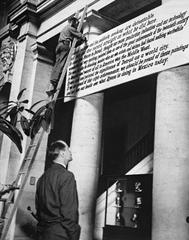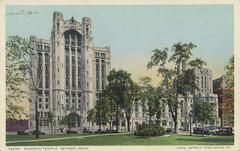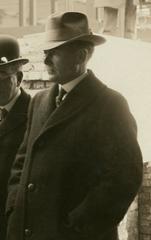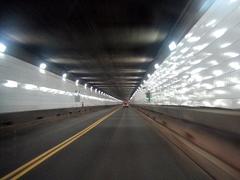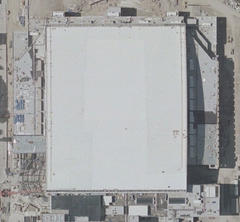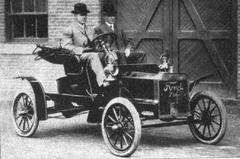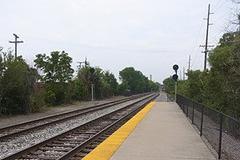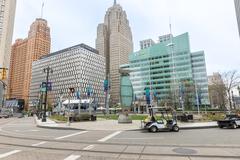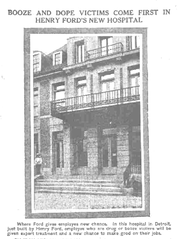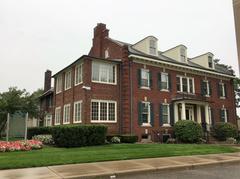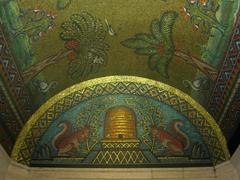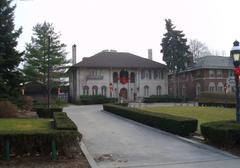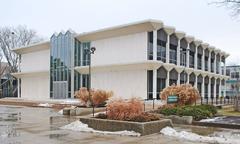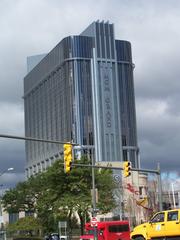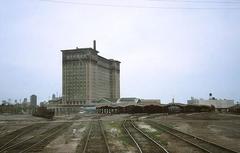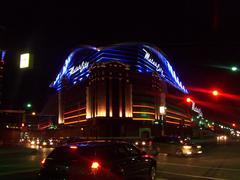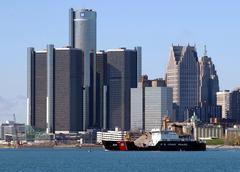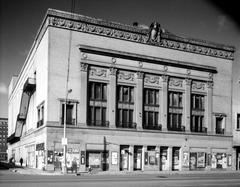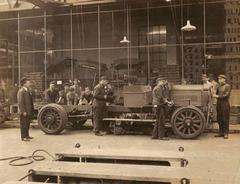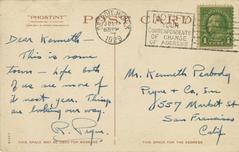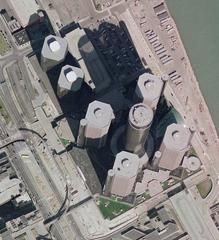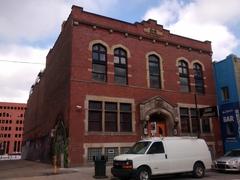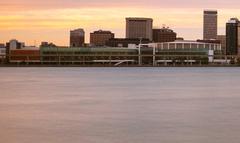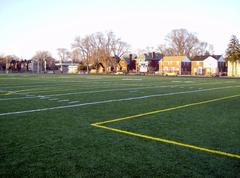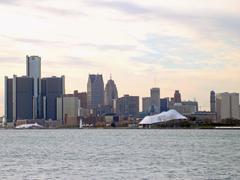
Detroit Cornice And Slate Company Building
Detroit Cornice and Slate Company Building: Visiting Hours, Tickets, and Historical Significance
Date: 04/07/2025
Introduction
The Detroit Cornice and Slate Company Building, located at 733 St. Antoine Street in downtown Detroit, is a historical and architectural icon that embodies the city’s industrial legacy and ongoing urban revival. Built in 1897 as the headquarters for the Detroit Cornice and Slate Company—a major manufacturer of architectural metalwork and slate roofing—this building stands out for its inventive use of pressed and hand-hammered steel, painted to resemble stone. Over more than a century, it has transitioned from an industrial hub to a celebrated example of adaptive reuse, earning recognition for both its preservation and modern adaptations (Detroit Historical Society; National Register of Historic Places).
Today, the building serves as a creative and commercial center, offering visitors a glimpse into Detroit’s architectural innovation and urban resilience. This comprehensive guide provides details on its history, architectural features, current uses, visiting information, accessibility, nearby attractions, and practical tips for exploring this Detroit historical site.
Table of Contents
- Introduction
- Historical Overview
- Architectural Significance
- Restoration Efforts
- Adaptive Reuse and Community Impact
- Visiting Information
- Frequently Asked Questions (FAQ)
- Visuals and Interactive Resources
- Conclusion and Recommendations
- References
Historical Overview
Origins and Early Years (1897–1920s)
Commissioned by the Detroit Cornice and Slate Company and designed by Harry J. Rill, the building opened in 1897 at the height of Detroit’s industrial expansion. The company’s expertise in architectural sheet metal and slate roofing adorned prestigious city landmarks, such as the Old Wayne County Building and the Detroit Opera House (Detroit Historical Society; National Register of Historic Places).
Mid-Century Transformation (1930s–1970s)
As tastes and economic circumstances shifted, the building’s original purpose waned. Despite Detroit’s mid-century decline and widespread demolition, the building endured thanks to its robust construction and adaptability, serving as warehousing and light manufacturing space (Historic Detroit).
Preservation and Adaptive Reuse (1980s–Present)
Recognizing its architectural and cultural value, the building was listed on the National Register of Historic Places in 1979 (National Park Service). Extensive restoration efforts in the late 20th and early 21st centuries, led by firms such as Kessler Associates, preserved the original metalwork while introducing a striking modern wing of stainless steel (Metro Times; Curbed Detroit).
Architectural Significance
Richardsonian Romanesque Design
The Detroit Cornice and Slate Company Building exemplifies the Richardsonian Romanesque style, marked by rusticated stone bases, rounded arches, and ornate detailing. Its use of painted steel to imitate stone was both a technological and aesthetic innovation (ArchDaily).
Notable Architectural Features
- Metal Cornices and Slate Detailing: Showcasing the company’s craftsmanship, these elements both embellish and advertise the building’s legacy.
- Arched Windows: Stone voussoirs frame large, rounded windows, enhancing natural light and Romanesque character.
- Masonry Construction: Durable brick and stone contribute to the building’s longevity.
- Ornamental Panels: Decorative terra cotta and metal panels add intricate visual interest.
Influence and Recognition
As one of the few surviving late 19th-century commercial structures in downtown Detroit, the building set standards for craftsmanship and preservation. Its restoration has spurred further conservation efforts citywide (Preservation Detroit; National Park Service).
Restoration and Modern Adaptations
Recent projects have integrated energy-efficient systems and accessibility features while meticulously repairing historic materials. The addition of the minimalist stainless-steel “silver boat” wing stands as a bold example of blending heritage and contemporary design (Metro Times).
Restoration Efforts
Early Preservation
The 1974 restoration prioritized conserving the original hand-hammered metal façade and intricate details, using historically accurate methods (Metro Times).
Modernization and Expansion
In 1999, a new stainless-steel wing was added, providing modern office space and contrasting dramatically with the original architecture (Curbed Detroit).
Technical Challenges and Solutions
Restorers faced corrosion, structural repairs, and the need for modern infrastructure. Solutions included specialized conservation methods and discreet integration of HVAC, electrical, and fire-safety systems. Accessibility improvements, such as elevators and ramps, were also installed (Traditional Building).
Adaptive Reuse and Community Impact
The building now houses creative offices, hospitality venues, and community spaces—most notably Flood’s Bar & Grille, a favorite among locals and visitors alike (Metro Times). Its transformation has contributed to the revitalization of Detroit’s Bricktown district, serving as a model for sustainable urban development (Visit Detroit).
The juxtaposition of old and new in its design has influenced other adaptive reuse projects throughout Detroit, inspiring preservationists and developers to retain historic character while embracing modern innovation.
Visiting Information
Hours, Tickets, and Tours
- Public Access: The building’s exterior can be viewed anytime from the street. Ground-floor businesses, such as Flood’s Bar & Grille, are open daily from 11:00 AM to midnight.
- Interior Access: Generally limited to tenants and special events. Occasional guided tours and open houses are organized by local preservation groups and the Michigan Architectural Foundation.
- Tickets: Not required for exterior viewing. Some tours or special events may charge admission—check event listings for details.
- Tour Scheduling: For up-to-date tour and event information, visit the Michigan Architectural Foundation or Visit Detroit.
Accessibility and Travel Tips
- Location: 733 St. Antoine Street, at the intersection with East Lafayette Street in downtown Detroit.
- Transit: Accessible via Detroit’s QLine streetcar, People Mover, and multiple bus lines. Parking garages and street parking are nearby.
- Accessibility: Elevators, ramps, and accessible restrooms are available; confirm specifics when booking tours or attending events.
- Best Time to Visit: Daylight hours offer the best viewing and photography conditions for the façade.
Nearby Attractions
- Greektown District: Renowned for dining and cultural events.
- Detroit Opera House
- Guardian Building
- Saints Peter and Paul Jesuit Church
- Detroit Riverwalk
These sites are within walking distance and often included in heritage tours.
Visitor Experience and Highlights
- Photography: The steel façade provides excellent photo opportunities—especially at golden hour.
- Dining: Flood’s Bar & Grille on the ground floor is a popular stop.
- Events: The building occasionally hosts art exhibitions, lectures, and open houses—check local listings for details.
Frequently Asked Questions (FAQ)
Q: What are the visiting hours?
A: The building’s exterior is viewable at any time. Flood’s Bar & Grille operates daily from 11:00 AM to midnight. Interior access is generally limited to special events.
Q: Do I need tickets to visit?
A: No ticket is required for exterior viewing. Some tours or events may require advance registration or a fee.
Q: Is the building accessible for visitors with disabilities?
A: Yes, the building features elevators and ramps; check with organizers for specific accommodations during events.
Q: Can I take photographs?
A: Yes, exterior photography is encouraged. For interior photography, obtain permission during guided tours or events.
Q: How do I join a guided tour?
A: Check with the Michigan Architectural Foundation and local tour operators for schedules and availability.
Visuals and Interactive Resources
- Images: High-quality exterior photos are available on the Michigan Architectural Foundation website.
- Map: Find the building’s location on Google Maps.
- Virtual Tours: Watch for online presentations or video tours during special events.
Conclusion and Recommendations
The Detroit Cornice and Slate Company Building stands as a proud testament to Detroit’s architectural ingenuity and resilience. From its origins as a manufacturing headquarters to its current role as a vibrant mixed-use center, the building reflects Detroit’s ability to adapt, preserve, and innovate. Whether you are admiring its unique pressed steel façade, exploring Detroit’s nearby historical sites, or participating in a guided tour, this landmark offers a meaningful connection to the city’s storied past and dynamic present.
Plan your visit today—and for the most up-to-date information on tours, events, and Detroit’s heritage sites, consult local preservation organizations or download the Audiala app for curated historical tours and updates.
References
- This is a sample text. (Detroit Historical Society)
- This is a sample text. (National Register of Historic Places)
- This is a sample text. (Metro Times)
- This is a sample text. (Curbed Detroit)
- This is a sample text. (Traditional Building)
- This is a sample text. (Visit Detroit)
- This is a sample text. (Historic Detroit)
- This is a sample text. (Michigan Architectural Foundation)

